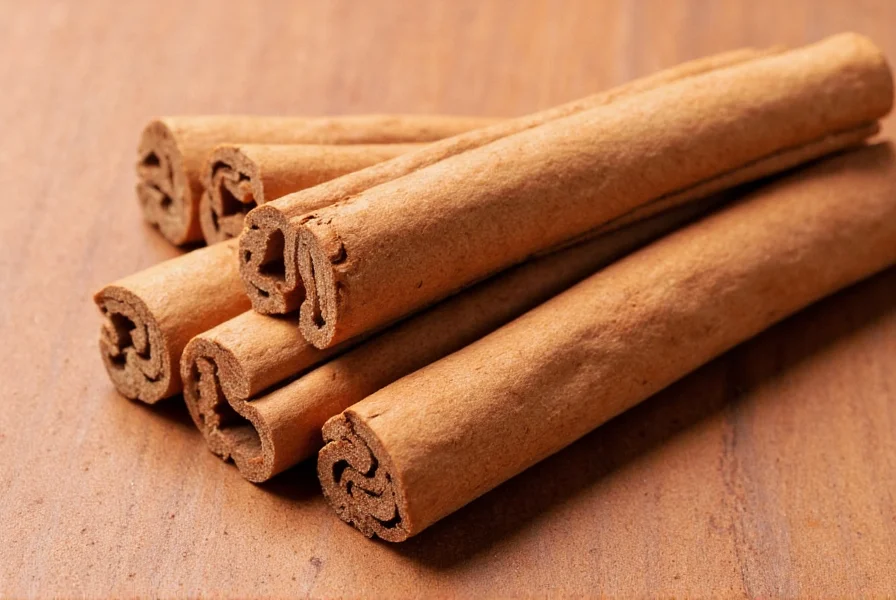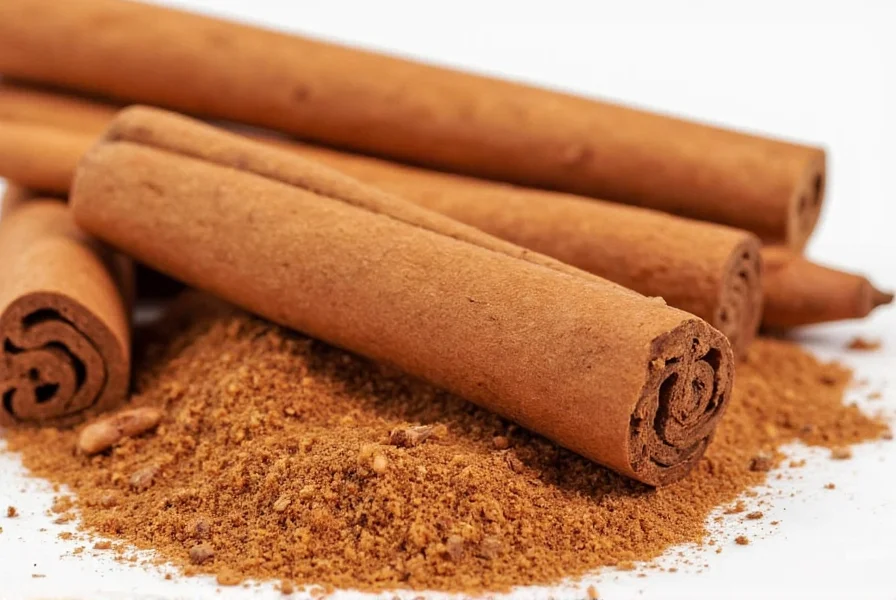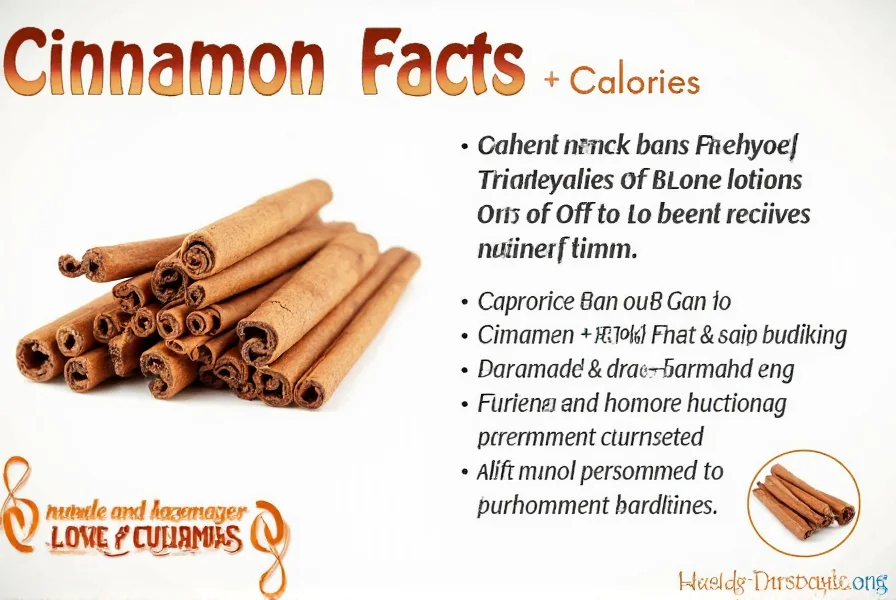One teaspoon (2.6g) of ground cinnamon contains approximately 6 calories, 2.1g carbohydrates, 1.0g fiber, and trace amounts of manganese (26% of Daily Value), calcium, and iron. Cinnamon's primary nutritional significance comes from its high antioxidant content and bioactive compounds like cinnamaldehyde, with notable differences between Ceylon ("true") cinnamon and the more common Cassia variety.
When exploring cinnamon nutrition facts, it's essential to understand both the basic nutritional profile and the bioactive compounds that give this ancient spice its health-promoting properties. Cinnamon has been used for thousands of years not just as a flavoring agent but also in traditional medicine systems worldwide. Modern research continues to investigate its potential health benefits while clarifying important safety considerations.
Nutritional Profile of Cinnamon
While cinnamon is typically consumed in small quantities, its nutritional density makes it a valuable addition to a health-conscious diet. The following table details the comprehensive cinnamon nutritional value per teaspoon (2.6g), which represents a typical daily serving:
| Nutrient | Amount per Teaspoon (2.6g) | % Daily Value* |
|---|---|---|
| Calories | 6 | 0% |
| Total Fat | 0.03g | 0% |
| Carbohydrates | 2.1g | 1% |
| Dietary Fiber | 1.0g | 4% |
| Sugars | 0.1g | 0% |
| Protein | 0.1g | 0% |
| Manganese | 0.5mg | 26% |
| Calcium | 26mg | 2% |
| Iron | 0.2mg | 1% |
| Potassium | 11mg | 0% |
*Percent Daily Values are based on a 2,000 calorie diet. Your daily values may be higher or lower depending on your calorie needs.
The standout nutrient in cinnamon nutritional facts is manganese, with just one teaspoon providing over a quarter of the recommended daily intake. Manganese plays crucial roles in bone formation, metabolism, and antioxidant function. While the calcium and iron content seems modest, these minerals still contribute meaningfully when cinnamon is used regularly in cooking and baking.
Ceylon vs. Cassia: Understanding the Nutritional Differences
Not all cinnamon is created equal from a nutritional perspective. The two primary varieties—Ceylon ("true" cinnamon) and Cassia (the more common type)—have significant differences that affect both nutritional value and safety:
| Characteristic | Ceylon Cinnamon | Cassia Cinnamon |
|---|---|---|
| Source | Cinnamomum verum (Sri Lanka) | Cinnamomum cassia (China, Indonesia) |
| Appearance | Multiple thin, tightly rolled layers | Single thick, hard rolled layer |
| Taste | Milder, sweeter | Stronger, spicier |
| Coumarin Content | Approximately 0.04mg per gram | Approximately 6mg per gram |
| Market Availability | Less common, more expensive | Most common in supermarkets |
These differences are particularly important when considering how much cinnamon is safe to eat daily. Coumarin, a naturally occurring compound found in higher concentrations in Cassia cinnamon, can potentially cause liver damage when consumed in large quantities over time. The European Food Safety Authority recommends a maximum daily intake of 0.1mg of coumarin per kilogram of body weight.
Health Benefits Supported by Research
The health benefits of cinnamon spice extend beyond its basic nutritional profile due to its rich array of bioactive compounds, particularly cinnamaldehyde (which gives cinnamon its distinctive flavor and aroma), along with polyphenols and other antioxidants.
Multiple studies have investigated cinnamon's potential effects on blood sugar regulation. Research published in the Journal of the Academy of Nutrition and Dietetics found that consuming 1-6 grams of cinnamon daily was associated with significant reductions in fasting blood glucose levels. This makes cinnamon a potentially valuable addition to diets for those managing blood sugar, though it should never replace medical treatment.
Cinnamon ranks exceptionally high on the Oxygen Radical Absorbance Capacity (ORAC) scale, which measures antioxidant capacity. In fact, cinnamon antioxidant properties are among the strongest of any spice, with some varieties scoring higher than even blueberries and garlic. These antioxidants help combat oxidative stress, which is linked to chronic diseases and aging.
Additional research suggests potential anti-inflammatory effects, though more human studies are needed to confirm these benefits. The cinnamon blood sugar benefits research remains the most substantiated area of potential health impact.
Safety Considerations and Recommended Intake
Understanding cassia cinnamon coumarin content is crucial for safe consumption. For a 150-pound (68kg) adult, the recommended maximum daily coumarin intake would be approximately 6.8mg. Since Cassia cinnamon contains about 6mg of coumarin per gram, this means consuming more than about 1 gram (roughly 1/2 teaspoon) of Cassia cinnamon daily could potentially exceed safe limits over time.
Nutrition experts generally recommend:
- For Cassia cinnamon: Limit to 1/2 to 1 teaspoon (1-2 grams) daily
- For Ceylon cinnamon: Up to 1-2 teaspoons (2-4 grams) daily is generally considered safe
- Individuals with liver conditions should consult healthcare providers before regular consumption
Those using cinnamon as a regular dietary supplement might want to consider rotating between Ceylon and Cassia varieties or primarily using Ceylon to minimize coumarin exposure while still enjoying the spice's benefits.
Practical Ways to Incorporate Cinnamon
Understanding cinnamon vs sugar nutritional comparison reveals why cinnamon makes an excellent sugar substitute in many recipes. While sugar provides empty calories, cinnamon offers flavor complexity along with beneficial compounds. Consider these practical applications:
- Add to morning coffee or tea instead of sugar
- Sprinkle on oatmeal, yogurt, or fruit salads
- Use in savory dishes like curries and stews
- Combine with other spices for homemade chai blends
- Replace some sugar in baking recipes (typically 1/4 to 1/2 teaspoon per cup of sugar)
When shopping for cinnamon, look for products that specify whether they contain Ceylon or Cassia varieties. Higher quality products often indicate the source region, with Ceylon cinnamon typically labeled as "Ceylon," "true cinnamon," or specifying Sri Lanka as the origin.
Conclusion
Cinnamon offers a remarkable combination of flavor and potential health benefits within a minimal caloric footprint. Its impressive cinnamon nutritional value per teaspoon makes it an excellent choice for those seeking to enhance both the taste and nutritional profile of their meals. By understanding the differences between cinnamon varieties and adhering to recommended consumption levels, you can safely enjoy this ancient spice's benefits as part of a balanced diet. Remember that while cinnamon shows promise in several areas of health research, it works best as part of an overall healthy lifestyle rather than as a standalone solution for health concerns.
How much cinnamon should I consume daily for health benefits?
Most research suggests 1/2 to 1 teaspoon (1-2 grams) of Cassia cinnamon or 1-2 teaspoons (2-4 grams) of Ceylon cinnamon daily provides potential health benefits while staying within safe coumarin limits. Consistency matters more than large single doses, so incorporating smaller amounts regularly into your diet is recommended.
Is cinnamon good for blood sugar control?
Multiple studies indicate cinnamon may help improve insulin sensitivity and lower fasting blood glucose levels. A meta-analysis in the Journal of Medicinal Food found significant reductions in fasting blood glucose with daily cinnamon consumption. However, it should complement—not replace—standard diabetes management approaches, and individuals with diabetes should consult their healthcare provider before using cinnamon therapeutically.
What's the difference between Ceylon and Cassia cinnamon from a nutritional standpoint?
Ceylon cinnamon contains significantly less coumarin (approximately 0.04mg per gram) compared to Cassia cinnamon (about 6mg per gram), making it safer for regular consumption. Both varieties offer similar antioxidant profiles and potential health benefits, but Ceylon is generally milder in flavor. Nutritionally, they're quite similar in terms of mineral content, with both providing manganese, calcium, and iron.
Can I get enough antioxidants from cinnamon to make a difference in my diet?
Yes, cinnamon ranks exceptionally high on the ORAC (Oxygen Radical Absorbance Capacity) scale, which measures antioxidant capacity. Just one teaspoon provides meaningful antioxidant activity. While you shouldn't rely solely on cinnamon for your antioxidant intake, regularly incorporating it into your diet contributes to your overall antioxidant consumption alongside fruits, vegetables, and other whole foods.
Does cinnamon lose its nutritional value when cooked or baked?
Most of cinnamon's beneficial compounds, particularly its antioxidants, remain stable during cooking and baking. The primary bioactive compound, cinnamaldehyde, is heat-stable, meaning cinnamon retains its nutritional properties when added to cooked dishes, baked goods, or hot beverages. For maximum benefit, add cinnamon toward the end of cooking when possible, but don't worry about significant nutrient loss during normal cooking processes.













 浙公网安备
33010002000092号
浙公网安备
33010002000092号 浙B2-20120091-4
浙B2-20120091-4